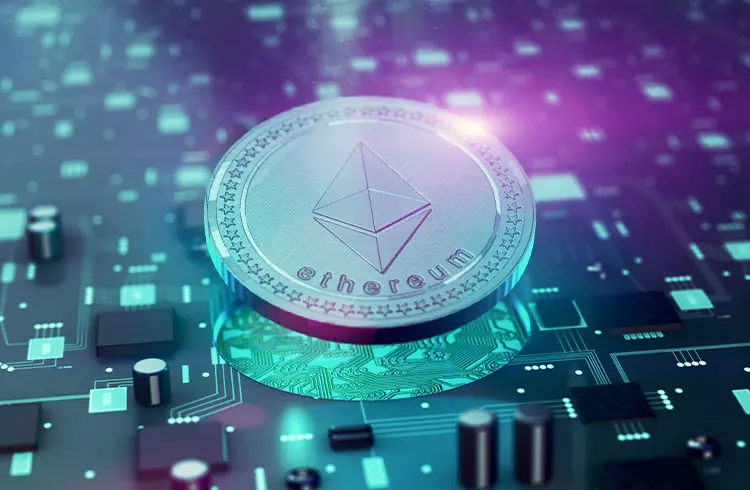Table of Contents
Supercomputers are at the forefront of computer science. They can process huge amounts of data and perform complex calculations at high speeds.
These high-performance machines are used for a variety of applications, from scientific research to national security simulations, climate modeling, industrial design and artificial intelligence (AI) .
The increasing demand for massive amounts of cloud-based computing power is bringing supercomputing technologies into hyperscale data centers. And the rapid adoption of AI will likely help build more supercomputers around the world.
The British government recently announced that it would invest £900 million in a new supercomputer.
This is intended to be one of the most powerful in Europe and will drive forward UK research and innovation into the potential and safe use of AI technology.
The cluster will include thousands of graphics processing units (GPUs) for training the large language models (LLMs) needed for AI research and development today.
As the UK looks to build one of the world’s first large-scale, open AI supercomputers, the question is where the world’s fastest supercomputers are and how many of them there are.
The definition of supercomputers
Before we dive into the numbers, it’s important to understand what differentiates a supercomputer from a high-performance computer.
Supercomputers are usually characterized by their exceptional computing power. Their speed is measured in floating-point operations per second, or flops for short.
This refers to how many arithmetic calculations they can perform.
While there is no strict limit that distinguishes a supercomputer from a normal high-performance computing (HPC) system, supercomputers are generally capable of speeds measured in teraFLOPs (trillions) and petaFLOPs (quadrillions). .
Supercomputers are used by governments, research institutions and industrial companies for a wide range of applications. They range from super large to small devices.
There are so many supercomputers today that it is difficult to determine their exact number. Additionally, some systems are not publicly known for reasons of national security, geopolitics, or competition.
However, the TOP500 project ranks the world’s 500 most powerful supercomputers every two years based on their performance on the Linpack benchmark.
This measures the speed at which a computer can solve a system of linear equations. This creates a standardized method for comparing the capabilities of supercomputers.
Where are the fastest supercomputers in the world?
The 500 fastest supercomputers are spread across 34 countries, of which 27 countries have more than one system. From November 2017 to November 2022, China had the highest total number of supercomputers.
But as of June 2023, the USA will be back at the top of the Top 500 list with 150 supercomputers. China has 134 and is followed by Germany with 36 supercomputers.
Japan and France round out the top five, while the United Kingdom, Canada, Brazil, South Korea and the Netherlands feature in the top 10.
The USA is also the leader in terms of performance, measured by the maximum achieved Linpack value (Rmax), with 2,400,757 TeraFLOPS (TFLOPS). This puts them far ahead of China with 465,824 TFLOPS.
The Frontier system at Oak Ridge National Laboratory (ORNL) in Tennessee, USA, is the only reported exascale computer with a high-performance linpack (HPL) of more than one exaflop per second (1 EFLOP/s).
The system is based on the HPE Cray EX235a architecture and is equipped with AMD EPYC 64C 2GHz processors and a total of 8,699,904 cores.
Frontier increased its HPL from 1.02 EFLOP/s in November 2022 to 1.194 EFLOP/s in June – an increase of 17%. Just a few years ago, exascale was considered an ambitious goal, which illustrates the rapid pace of technological development.
The fastest supercomputer to date was the Fugaku system with 442 PFLOP/s at the Riken Center for Computational Science (R-CCS) in Kobe, Japan (June 2020 to June 2022).
Fugaku uses Fujitsu’s 48-core A64FX system-on-chip (SoC), making it the first top-of-the-line system powered by ARM processors.
The Summit supercomputer at ORNL ranked first with a performance of 122.3 PFLOP/s from June 2018 to November 2019. Now he is in fifth place with an improved performance of 148.60 PFLOP/s.
The Sunway TaihuLight supercomputer at the National Supercomputing Center in the Chinese city of Wuxi was the fastest from June 2016 to November 2017 and now ranks seventh with a speed of 93.01 PFLOP/s.
China’s development of supercomputers has been hit by U.S. sanctions that limit the country’s access to semiconductor equipment and other advanced technologies that can be used for military or intelligence purposes.
However, there are reports that China has other state-of-the-art supercomputers, which, although not benchmarked, are evident from scientific results published in research papers.
Performance requirements drive energy efficiency
Supercomputers and HPC are facing rising energy costs, particularly as demand for AI, machine learning, and high-performance data analytics (HPDA) resources increases.
New central processing units (CPUs) and graphics processors consume more power than older models.
Concerns about carbon emissions and government regulations continue to drive energy efficiency and sustainability efforts.
The Green500 list, which is published alongside the Top500, sorts the world’s most powerful supercomputers according to their energy efficiency.
The two most efficient supercomputers are in the USA, followed by systems in France, Australia and Sweden. Supercomputers in Finland and Germany contribute to the top 10.
The HPL performance of the top systems shows that enormous performance does not have to come at the expense of efficient energy use.
For example, the LUMI supercomputer in Finland is the fastest in Europe and the third fastest in the world with an Rmax of 309.10 PFLOP/s.
The system, fully operational since December 2022, ranks seventh on the Green500 list with an efficiency of 51,382 GFLOPs per watt.
LUMI is powered exclusively by CO2-free electricity from hydropower and uses natural water cooling systems to cool its processors.
In addition, all of the waste heat he produces is reused to provide district heating in his hometown of Kajaani.
The Leonardo supercomputer in Italy is the fourth fastest in the world. It is ranked 15th most energy efficient.
All six supercomputers of the European High-Performance Computing (EuroHPC) Joint Undertaking (JU) are water-cooled to improve their energy efficiency and are intended to work as sustainably as possible.
The Frontier supercomputer in the USA ranks as the sixth most energy efficient computer with a value of 52.59 GFLOPs/Watt, although its HPL value is 1.194 EFLOP/s.
Conclusion
Supercomputers play an important role in advancing science, technology and innovation in various research, academic, military and industrial applications.
The number of supercomputers in the world is a dynamic number that changes as technology advances and new machines are introduced.
As technology evolves with increasing demand for cloud computing capabilities and artificial intelligence, the number of supercomputers is expected to grow and push the boundaries of what is possible in computer science and engineering.
- Why Online Advertisers Should Request Website Traffic Data from Google Analytics Instead of Using SEO Tools Like MOZ or Ahrefs? - March 24, 2025
- North Carolina’s Bold Move: State Bill Proposes Investing 10% of Public Funds in Bitcoin - March 22, 2025
- Justin Sun Stakes $100 Million in Ethereum on Lido – What Does It Mean for the Market? - March 19, 2025


























